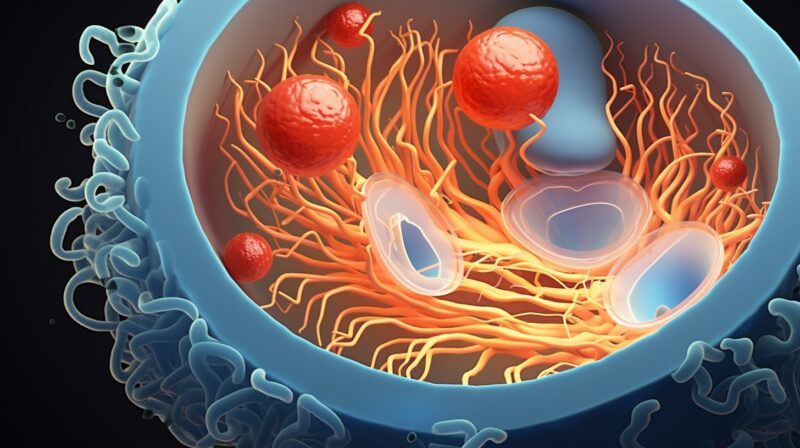The human body is a marvel of biological engineering, with systems and compartments working in harmony to ensure our survival. One such intricate system is the distribution and compartmentalization of body fluids.
These fluids play a crucial role in maintaining homeostasis, ensuring that our cells function optimally, and facilitating communication between different parts of the body. In this article, we’ll delve deep into the world of body fluid compartments, breaking down their significance, distribution, and the barriers that define them.
Fluid within the body is not just a homogenous mixture. It’s compartmentalized, separated by semi-permeable membranes that allow the free movement of water but restrict certain solutes.
In a healthy individual, this fluid is divided between these compartments in specific ratios. Let’s explore how these compartments are defined, the nature of their separating barriers, and the volume each compartment holds in a healthy individual.
Distribution of Body Fluids
Did you know that approximately 60% of your total body weight is water? It’s a staggering figure when you think about it. This water isn’t just sloshing around freely inside you. It’s meticulously distributed.
- Intracellular Fluid (ICF): This is the fluid held within our cells, making up about two-thirds of the total body water. It’s separated from the extracellular space by the plasma membrane, which is permeable to water but restricts the movement of small solutes and proteins.
- Extracellular Fluid (ECF): This is the fluid outside our cells. It’s further divided into plasma (fluid within the vasculature) and interstitial fluid (fluid outside the vasculature). Each of these compartments has unique barriers with distinct physio-chemical properties.

Intracellular Fluid Compartment
The Intracellular Fluid, or ICF, is a vital component of our body’s fluid system. It’s the fluid present inside our cells and accounts for a significant portion of our body’s total fluid volume.
The ICF is the sum total of the fluid volume in all of the body’s cells. It’s separated from the Extracellular Fluid (ECF) by the plasma membrane of each cell. This membrane, while permeable to water, is a formidable barrier to both ionic and small solutes, as well as proteins. Here are some key insights:
- The ICF contains about two-thirds of the total body water.
- It represents roughly 40% of the total body weight.
Extracellular Fluid Compartment
The Extracellular Fluid, or ECF, is just as crucial as the ICF. It encompasses the total volume of fluid outside our cells and plays a pivotal role in nutrient transport, waste removal, and overall homeostasis.
Separated from the ICF by the plasma membrane of each cell, the ECF is a diverse compartment. This membrane is almost impermeable to most solute classes. Some essential points to note:
- The ECF holds about one-third of the total body water.
- It accounts for approximately 20% of total body weight.
- The ECF is further divided into the Interstitial Fluid and the Plasma, separated by the body’s vasculature.
Interstitial Fluid
The Interstitial Fluid is the component of the ECF that exists outside of our blood vessels. It’s separated from the plasma by the walls of the body’s vasculature. The vasculature is designed to allow the free movement of water and small solutes but restricts the movement of proteins.
This results in the interstitial fluid having a similar chemical composition to plasma, but without the proteins.
Plasma
Plasma is the fluid component of our blood, found within the vascular space. It’s separated from the interstitial fluid by the vascular wall, which, like the vasculature, is permeable to water and small solutes but not proteins.
An essential distinction to remember is that plasma volume is not the same as blood volume. Erythrocytes, or red blood cells, contribute nearly 40% of the entire blood’s volume. Both the ECF in plasma and the ICF in erythrocytes contribute to the total blood volume.
Fluid Balance and Homeostasis

Maintaining the right balance of fluids in each compartment is crucial for our body’s optimal functioning. This balance ensures that cells receive the necessary nutrients, hormones, and oxygen while simultaneously removing waste products. Let’s dive into the mechanisms that help maintain this equilibrium.
Osmoregulation
Osmoregulation refers to the process by which the body adjusts the osmotic pressure of body fluids to maintain fluid balance. It involves a complex interplay of hormones, primarily antidiuretic hormone (ADH) and aldosterone.
- Antidiuretic Hormone (ADH): Released by the posterior pituitary gland, ADH increases the permeability of the kidney’s collecting ducts, allowing more water to be reabsorbed. This results in concentrated urine and helps in conserving water when the body is dehydrated.
- Aldosterone: Produced by the adrenal cortex, aldosterone increases sodium reabsorption in the kidneys. Water passively follows sodium, leading to increased water reabsorption.
Acid-Base Balance
The body’s pH level, which indicates its acidity or alkalinity, is tightly regulated to ensure that enzymes and other biochemical processes function optimally.
- Bicarbonate Buffer System: This is the primary system in the ECF that helps regulate pH. It involves a balance between bicarbonate ions (HCO₃⁻) and carbonic acid (H₂CO₃).
- Respiratory and Renal Systems: These systems work in tandem to excrete or retain hydrogen ions (H⁺) and bicarbonate ions, ensuring the body’s pH remains stable.
Barriers and Transport Mechanisms
The semi-permeable barriers between fluid compartments ensure selective movement of substances, maintaining the unique composition of each compartment. Let’s understand these barriers and the transport mechanisms they employ.
Plasma Membrane
The plasma membrane, a lipid bilayer, is the primary barrier between the ICF and ECF. It’s embedded with proteins that facilitate selective transport.
- Passive Transport: This includes simple diffusion, facilitated diffusion, and osmosis. It’s driven by concentration gradients and doesn’t require energy.
- Active Transport: This involves carrier proteins and requires energy, usually from ATP. It moves substances against their concentration gradient.
Capillary Walls
The walls of capillaries, another crucial barrier, separate the plasma from the interstitial fluid. They have pores that allow selective movement.
- Filtration: Driven by hydrostatic pressure, it pushes water and solutes from the plasma into the interstitial space.
- Reabsorption: Osmotic pressure drives this process, pulling water back into the capillaries from the interstitial space.
Disorders of Fluid Imbalance

Disruptions in fluid balance can lead to various disorders, highlighting the importance of maintaining equilibrium.
- Dehydration: Dehydration occurs when the body loses more water than it takes in. It can result from excessive sweating, diarrhea, or insufficient water intake. Symptoms include thirst, dry skin, and dizziness.
- Edema: Edema refers to the accumulation of excess fluid in the interstitial space. It can be caused by increased capillary pressure, decreased plasma proteins, or blockage of lymphatic vessels.
- Hyponatremia: This condition arises when there’s a low concentration of sodium in the blood. It can result from excessive water intake, certain medications, or conditions like heart failure.
Final Words
In understanding these compartments and their dynamics, we not only gain insight into the marvel that is the human body but also the various pathologies that arise when this balance is disrupted. It serves as a reminder of the importance of hydration, nutrition, and overall well-being.
Thank you for joining us on this enlightening journey through the body’s fluid compartments. We hope this article has quenched your thirst for knowledge and inspired a deeper appreciation for the wonders of human physiology.

